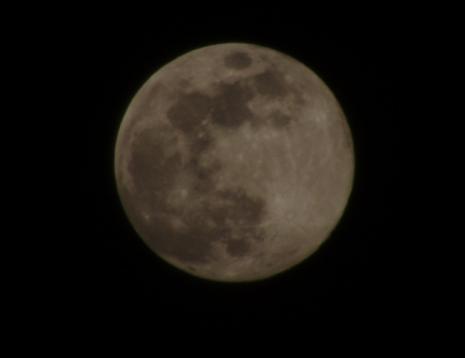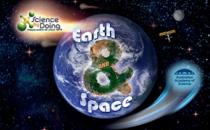
Dark side of the moon - Year 7 CLE

This ASSIST CLE helps teach Year 7s astronomy concepts.
The resource is an ASSIST Connected Learning Experience (CLE) aimed at helping teach Year 7s astronomy concepts using the example of Earth's moon.
Description: In this investigation, students explore how our understanding of the Earth and the moon has changed through examining the validity of the common anecdotal reference to ‘the dark side of the moon’. In the process they will discover why the moon undergoes a cyclic change in appearance over the course of its movement around the Earth and how its movement influences tidal changes.
Learning intentions
Students will be able to:
- identify questions that can be investigated scientifically;
- identify that the Moon rotates on its axis as it moves around the Earth, and hence experiences day and night just as the Earth does;
- describe the way the Moon moves around the Earth and hence explain why the same side of the Moon always faces the Earth as it moves around the Earth;
- explain why the shape of the Moon that we can observe from Earth, changes as it moves around the Earth;
- analyse information from digital technologies and images to arrange the different phases of the Moon in chronological order;
- appreciate the importance of scientific discovery in changing people’s understanding of the world around us;
- communicate their ideas using appropriate scientific language and representations.
Australian Curriculum v9 Codes: AC9S7U03 (Year 7)
Additional Information
The Connect Learning Experience Resource
A Connected Learning Experience (CLE) is a resource package designed to support the use of inquiry investigations in the classroom.
Each CLE may not encompass all the concepts and skills addressed in the specific content descriptions outlined by the Australian Curriculum: Science for that Year level. The Learning Intentions clearly define the aims and objectives of the CLE.
Year 7 Achievement Standard
This lesson sequence provides opportunities to gather information about students’ achievement of specific components in the standards (which are bolded in the statements below).
By the end of Year 7, students describe techniques to separate pure substances from mixtures. They represent and predict the effects of unbalanced forces, including Earth’s gravity, on motion. They explain how the relative positions of the Earth, sun and moon affect phenomena on Earth. They analyse how the sustainable use of resources depends on the way they are formed and cycle through Earth systems. They predict the effect of environmental changes on feeding relationships and classify and organise diverse organisms based on observable differences. Students describe situations where scientific knowledge from different science disciplines has been used to solve a real-world problem. They explain how the solution was viewed by, and impacted on, different groups in society.
Students identify questions that can be investigated scientifically. They plan fair experimental methods, identifying variables to be changed and measured. They select equipment that improves fairness and accuracy and describe how they considered safety. Students draw on evidence to support their conclusions. They summarise data from different sources, describe trends and refer to the quality of their data when suggesting improvements to their methods. They communicate their ideas, methods and findings using scientific language and appropriate representations.
Relevant prior curriculum knowledge
Science / Year 3 / Science Understanding / Earth and space sciences
Content description
Earth’s rotation on its axis causes regular changes, including night and day (ACSSU048).
Science / Year 1 / Science Understanding / Earth and space sciences
Content description
Observable changes occur in the sky and landscape (ACSSU019).
Science / Year 6 / Science Inquiry Skills / Processing and analysing data and information
Content description
Construct and use a range of representations, including tables and graphs, to represent and describe observations, patterns or relationships in data using digital technologies as appropriate (ACSIS107).
- Year 7 > Science Inquiry Skills > Communicating > Communicate ideas, findings and evidence-based solutions to problems using... > ACSIS133
- Year 7 > Science Inquiry Skills > Processing and analysing data and information > Summarise data, from students’ own investigations and secondary sources, and... > ACSIS130
- Year 7 > Science Inquiry Skills > Questioning and Predicting > Identify questions and problems that can be investigated scientifically and... > ACSIS124
- Year 7 > Science Understanding > Earth and Space Sciences > Predictable phenomena on Earth, including seasons and eclipses, are caused by... > ACSSU115
- Year 7 > Science as a Human Endeavour > Nature and development of science > Scientific knowledge has changed people's understanding of the world and is... > ACSHE119

